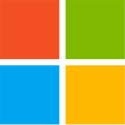
IBM Expands Quantum Data Center in Poughkeepsie, New York to Advance Algorithm Discovery Globally
IBM announced today the completion of its latest expansion of the IBM Quantum Data Center in Poughkeepsie, New York, which operates the highest number of available utility-scale quantum computers at a single location in the world. These systems are a part of the more than a dozen quantum computers offered to global clients via the IBM cloud.
To advance its mission of bringing useful quantum computing to the world, IBM has heavily invested in deploying advanced quantum hardware architectures. First introduced late last year, the IBM Quantum Heron processor has now been deployed in IBM's global Quantum Data Center in Poughkeepsie.
To advance its mission of bringing useful quantum computing to the world, IBM has heavily invested in deploying advanced quantum hardware architectures. First introduced late last year, the IBM Quantum Heron processor has now been deployed in IBM's global Quantum Data Center in Poughkeepsie.












































